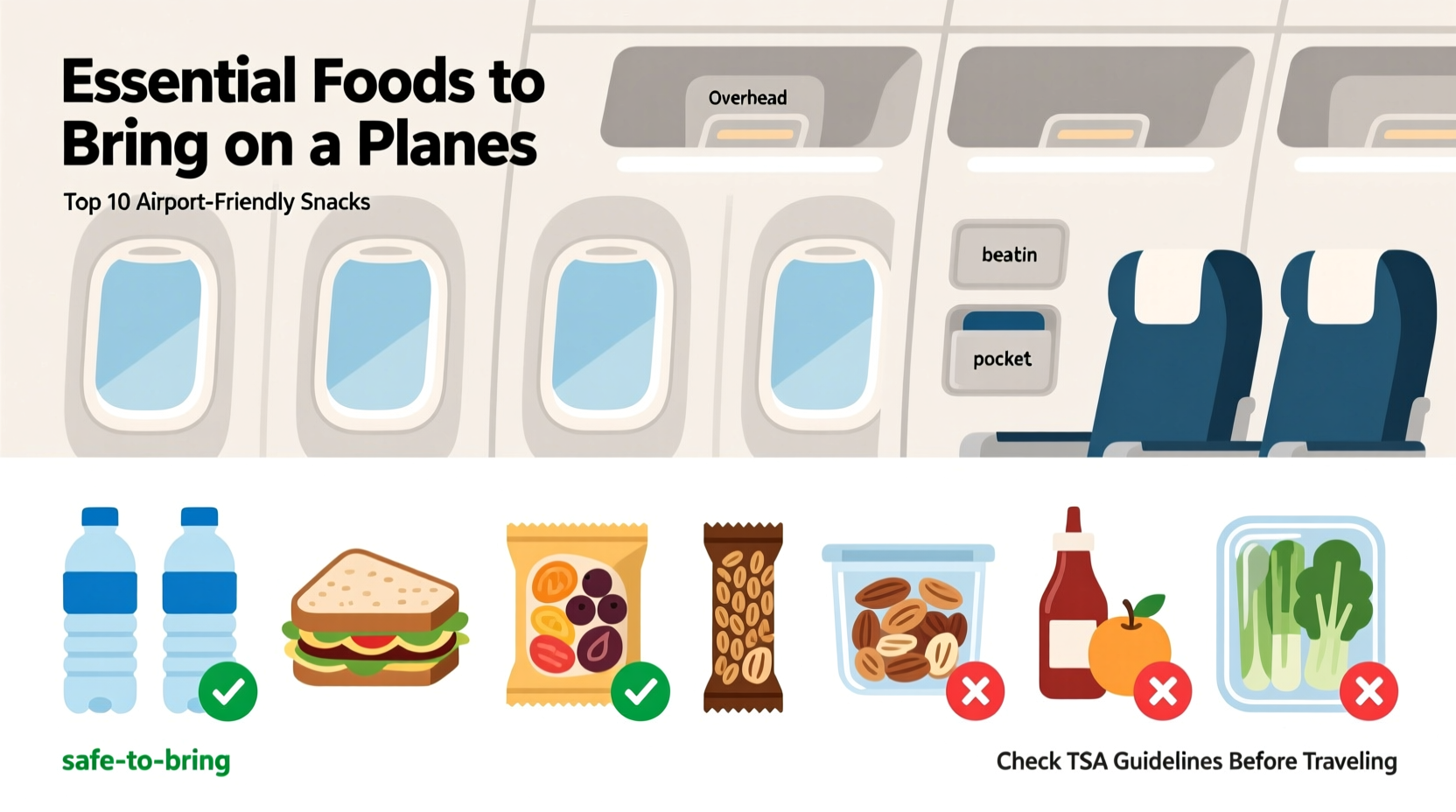Traveling with food doesn't have to be stressful when you know exactly what's allowed. Whether you're managing dietary restrictions, packing snacks for kids, or simply wanting to save money on expensive airport meals, understanding the rules can make your journey smoother. This guide breaks down everything you need to know about bringing food on planes, with practical advice from pre-flight planning to navigating security checkpoints.
Before You Pack: Essential Food Travel Planning
Smart food preparation starts long before you reach the airport. Consider these factors when deciding what to bring:
- Destination regulations - International flights have stricter rules about fresh produce and meats
- Flight duration - Short flights may not need substantial food, while long-haul trips benefit from proper planning
- Special dietary needs - Medical conditions or allergies require advance preparation
- Security timing - Complex food arrangements may slow your security screening process
According to the Transportation Security Administration (TSA), travelers with medical dietary requirements can bring necessary food items through security after proper inspection. Always pack medications and medically necessary foods in your carry-on for accessibility during the flight.
Navigating TSA Security with Food Items
The TSA's 3-1-1 rule governs liquid restrictions, but solid foods have more flexibility. Here's what you need to know for smooth security screening:
| Food Category | Allowed in Carry-On? | Special Requirements |
|---|---|---|
| Dry snacks (chips, crackers, nuts) | Yes | Must be in original packaging or secure container |
| Fresh fruits and vegetables | Yes (domestic) | May be restricted on international flights |
| Sandwiches and baked goods | Yes | Must be wrapped securely |
| Liquids/gels (yogurt, hummus, soup) | Limited | 3.4 oz or less per container in 1-quart bag |
| Infant formula/baby food | Yes | Subject to additional screening |
The evolution of food regulations has changed significantly since 9/11. Initially, nearly all food items were prohibited. By 2006, the TSA began allowing solid foods while maintaining liquid restrictions. Current regulations reflect years of refinement balancing security needs with traveler convenience. The 3-1-1 rule for liquids was introduced in 2006 and remains largely unchanged, though exceptions for medical and infant needs have expanded.
International Flight Considerations
When traveling across borders, additional restrictions apply that many travelers overlook. The U.S. Customs and Border Protection (CBP) prohibits certain agricultural products to prevent invasive species and diseases. Before your international trip:
- Check specific restrictions for your destination country
- Avoid bringing fresh fruits, vegetables, meats, or dairy products
- Declare all food items if unsure about regulations
- Consider purchasing food after security at your departure airport
According to CBP guidelines, travelers entering the United States cannot bring most meats, fresh fruits, vegetables, plants, seeds, and soil. These restrictions exist to protect American agriculture from foreign pests and diseases. Similar regulations exist for travelers entering other countries, so research your destination's specific requirements.
Smart Packing Strategies for Travel Food
How you pack your food matters as much as what you bring. Follow these practical tips for hassle-free food travel:
- Container selection - Use leak-proof containers for semi-solids and moist foods
- Organization - Keep food separate from toiletries and other liquids
- Accessibility - Place food items where they're easily removable for screening
- Temperature control - Use insulated bags with ice packs for perishables (frozen ice packs are allowed if solid)
For travelers with special dietary needs, the TSA recommends contacting them 72 hours before travel through their TSA Cares service. This program helps passengers with disabilities and medical conditions navigate security procedures, including food restrictions.
What Happens If You Bring Prohibited Items?
Understanding the consequences of bringing restricted food items can save you time and frustration. At security checkpoints:
- Liquids exceeding 3.4 oz will be confiscated
- Uncertain items may undergo additional screening
- Prohibited agricultural products on international flights may result in fines
- You can often transfer items to checked luggage if time permits
The TSA reports that approximately 3% of all carry-on bags contain prohibited food items that require intervention. Most commonly confiscated items include large containers of salad dressing, jars of peanut butter, and bottles of olive oil. When in doubt, remember the simple rule: if it's pourable, spreadable, or spoonable, it likely counts as a liquid.

Final Tips for Stress-Free Food Travel
Before your next flight, remember these key takeaways:
- Solid foods generally travel without issues
- Liquids must follow the 3-1-1 rule
- International flights have stricter agricultural restrictions
- Declare questionable items rather than hiding them
- When uncertain, check the TSA website before traveling
Travel food regulations exist to balance security needs with passenger convenience. By understanding these rules and planning accordingly, you can enjoy your favorite snacks while avoiding security delays. The TSA website provides the most current information, as regulations occasionally change based on security assessments.











 浙公网安备
33010002000092号
浙公网安备
33010002000092号 浙B2-20120091-4
浙B2-20120091-4